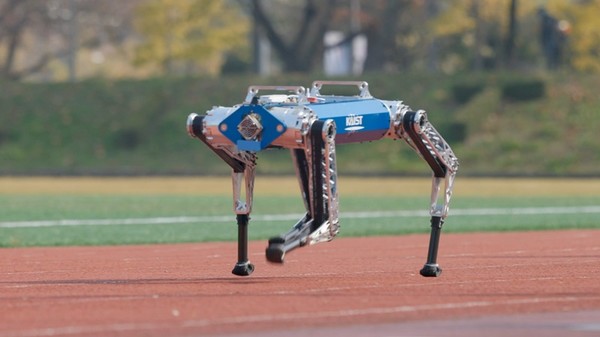KAIST’s four-legged robot Hound received the title of the fastest quadrupedal robot to run 100 meters by the Guinness World Records on December 15 last year. Hound was developed by the Dynamic Robot Control and Design (DRCD) Laboratory of the Department of Mechanical Engineering, led by Professor Hae-Won Park.

The official record was measured last October at KAIST’s outdoor stadium (E17). On the outdoor track, Hound ran 100 meters in 19.87 seconds at a speed of approximately 5.03 meters per second and was able to come to a complete stop by itself after the run. Hound reached a running speed of 6.5 meters per second when recorded on an indoor treadmill. This record-breaking speed is currently being reviewed by the Guinness World Record and can potentially overtake MIT’s Cheetah 2, which currently holds the world record of 6.4 meters per second.
The DRCD Laboratory trained the robot with reinforcement learning through simulations with a single motor controller. They particularly focused on the characteristics of the torque limiter and speed by pushing the actuator to run at its highest speed. Additionally, Hound is designed to evenly distribute motor output through symmetrical steps and has lightweight feet features specialized for sprinting.
Besides sprinting, Hound is also capable of performing diverse motions such as walking 3.2 kilometers, climbing a slope of 22 degrees, and moving over a 35 centimeter-high obstacle. Professor Hae-Won Park said, “Hound has the significance of demonstrating South Korea’s world-class robot hardware and robot control AI technology as it set the world record of the fastest quadrupedal robot based on an AI learning-based controller developed at KAIST.”

